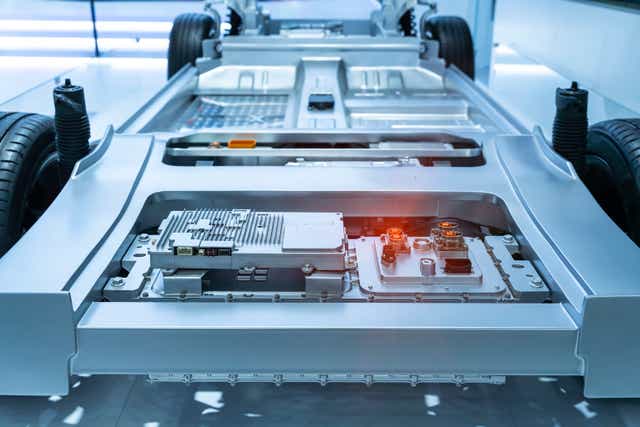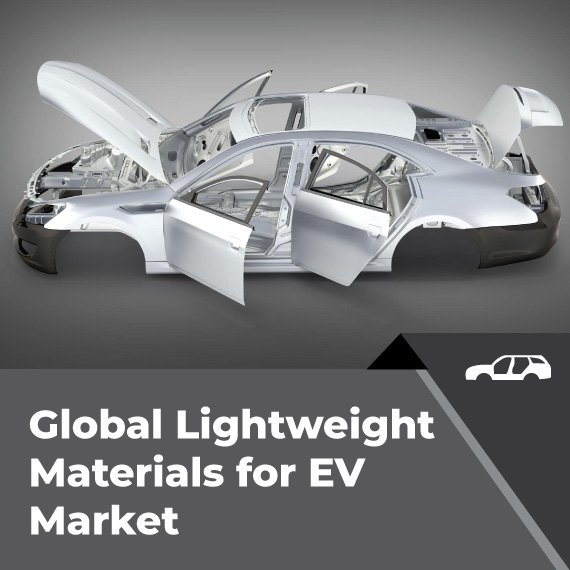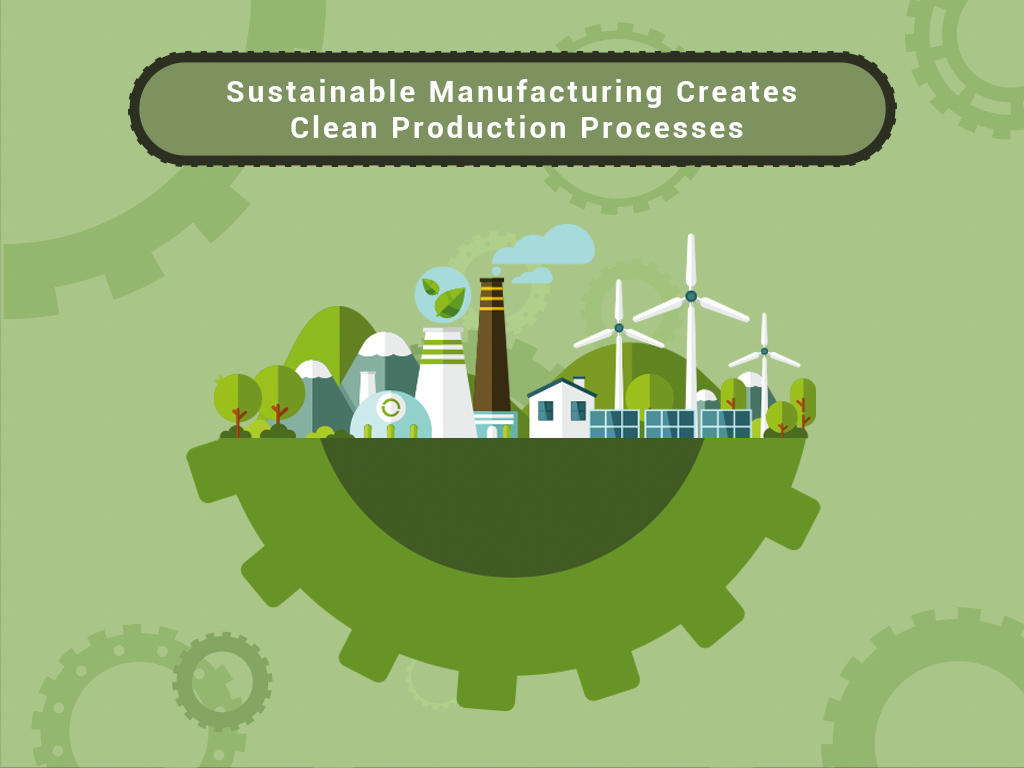Unlocking the Potential of EV Materials: A Deep Dive
The transportation sector is undergoing a significant transformation, driven by the increasing demand for sustainable and environmentally friendly solutions. Electric vehicles (EVs) are at the forefront of this revolution, and their growth is heavily dependent on advancements in electric vehicle materials and manufacturing. The development of new materials and manufacturing processes is crucial for improving the performance, efficiency, and affordability of EVs.
One of the key challenges in EV manufacturing is the development of materials that can meet the demanding requirements of electric vehicle batteries, motors, and other components. Researchers and manufacturers are working together to create new materials that can improve the energy density, power density, and lifespan of EV batteries. For example, the development of solid-state batteries, which replace the liquid electrolyte with a solid material, has the potential to significantly improve the safety and performance of EVs.
In addition to battery technology, advancements in materials science are also driving the development of more efficient and sustainable EV manufacturing processes. For instance, the use of 3D printing and other additive manufacturing techniques can reduce waste, energy consumption, and emissions during the production process. Furthermore, the development of new materials such as carbon fiber, aluminum, and advanced high-strength steel is enabling the creation of lighter and more efficient EVs.
The importance of electric vehicle materials and manufacturing cannot be overstated. As the demand for EVs continues to grow, the development of new materials and manufacturing processes will play a critical role in shaping the future of the industry. By investing in research and development, manufacturers can create more sustainable, efficient, and affordable EVs that meet the needs of consumers and help to reduce our reliance on fossil fuels.
In the next section, we will delve into the critical role of battery technology in electric vehicles and provide guidance on selecting the most suitable materials for optimal performance.
How to Optimize EV Battery Performance: A Guide to Materials Selection
Battery technology plays a critical role in the performance, efficiency, and range of electric vehicles. The selection of suitable materials is crucial for optimizing EV battery performance. Lithium-ion batteries are currently the most widely used battery technology in EVs, but other materials such as nickel-manganese-cobalt (NMC) and solid-state batteries are gaining traction.
Lithium-ion batteries offer high energy density, long cycle life, and relatively low self-discharge rates. However, they also have limitations, such as high costs, limited charging speeds, and potential safety concerns. NMC batteries, on the other hand, offer improved safety, higher energy density, and lower costs compared to lithium-ion batteries. Solid-state batteries, which replace the liquid electrolyte with a solid material, have the potential to significantly improve safety, energy density, and charging speeds.
When selecting materials for EV battery production, manufacturers must consider several factors, including energy density, power density, cycle life, and cost. The choice of materials will also impact the overall performance, efficiency, and range of the EV. For example, the use of high-nickel content cathodes can improve energy density, but may also increase costs and reduce cycle life.
In addition to material selection, battery design and manufacturing processes also play a critical role in optimizing EV battery performance. Advances in battery design, such as the use of 3D printing and other additive manufacturing techniques, can improve energy density, reduce waste, and increase efficiency. Similarly, innovations in manufacturing processes, such as the use of robotic assembly and automated testing, can improve quality, reduce costs, and increase production rates.
The development of new battery materials and technologies is crucial for the growth of the EV industry. As the demand for EVs continues to grow, the need for more efficient, sustainable, and cost-effective battery solutions will become increasingly important. By investing in research and development, manufacturers can create more advanced battery technologies that meet the needs of consumers and help to reduce our reliance on fossil fuels.
In the next section, we will explore the benefits of using lightweight materials in electric vehicle manufacturing, including reduced weight, improved fuel efficiency, and enhanced performance.
The Rise of Lightweight Materials: Reducing EV Weight and Increasing Efficiency
The use of lightweight materials in electric vehicle (EV) manufacturing is becoming increasingly important as the industry continues to evolve. By reducing the weight of EVs, manufacturers can improve fuel efficiency, increase range, and enhance overall performance. In this section, we will explore the benefits of using lightweight materials in EV manufacturing and highlight examples of innovative materials such as carbon fiber, aluminum, and advanced high-strength steel.
One of the primary benefits of using lightweight materials in EV manufacturing is the reduction of weight. By using materials such as carbon fiber and aluminum, manufacturers can reduce the weight of EVs by up to 50%. This reduction in weight can lead to improved fuel efficiency, increased range, and enhanced performance. Additionally, lightweight materials can also improve the safety of EVs by reducing the risk of injury in the event of a collision.
Carbon fiber is one of the most promising lightweight materials for EV manufacturing. This material is incredibly strong, yet lightweight, making it an ideal choice for EV components such as chassis, body panels, and battery enclosures. Additionally, carbon fiber can be molded into complex shapes, allowing for the creation of intricate designs and structures.
Aluminum is another lightweight material that is gaining popularity in EV manufacturing. This material is corrosion-resistant, durable, and can be easily recycled, making it an attractive choice for EV components such as engine blocks, cylinder heads, and gearboxes. Additionally, aluminum can be alloyed with other materials to create high-strength, lightweight alloys.
Advanced high-strength steel (AHSS) is another innovative material that is being used in EV manufacturing. This material is incredibly strong, yet lightweight, making it an ideal choice for EV components such as chassis, body panels, and suspension components. Additionally, AHSS can be formed into complex shapes, allowing for the creation of intricate designs and structures.
The use of lightweight materials in EV manufacturing is not only beneficial for the environment, but also for the consumer. By reducing the weight of EVs, manufacturers can improve fuel efficiency, increase range, and enhance overall performance. This can lead to cost savings for consumers, as well as a more enjoyable driving experience.
In the next section, we will delve into the design and manufacturing of electric motors, including the importance of magnetic materials, winding configurations, and thermal management.
Electric Motor Design and Manufacturing: The Key to Efficient EV Performance
Electric motors are a crucial component of electric vehicles (EVs), responsible for converting electrical energy into mechanical energy to propel the vehicle. The design and manufacturing of electric motors play a critical role in determining the efficiency, performance, and range of EVs. In this section, we will delve into the design and manufacturing of electric motors, including the importance of magnetic materials, winding configurations, and thermal management.
Magnetic materials are a key component of electric motors, responsible for generating the magnetic field that drives the motor. The choice of magnetic material can significantly impact the efficiency and performance of the motor. For example, neodymium iron boron (NdFeB) magnets are commonly used in EV motors due to their high magnetic strength and resistance to demagnetization.
Winding configurations are another critical aspect of electric motor design. The winding configuration determines the motor’s efficiency, power density, and thermal management. For example, a concentrated winding configuration can improve the motor’s efficiency and power density, while a distributed winding configuration can improve thermal management.
Thermal management is also a critical aspect of electric motor design. Electric motors generate heat during operation, which can impact their efficiency and lifespan. Advanced thermal management systems, such as liquid cooling and air cooling, can help to mitigate this issue and improve the motor’s overall performance.
The manufacturing process for electric motors is also critical in determining their efficiency and performance. Advanced manufacturing techniques, such as 3D printing and robotic assembly, can improve the motor’s efficiency and reduce production costs. Additionally, the use of advanced materials, such as carbon fiber and advanced high-strength steel, can improve the motor’s performance and reduce weight.
The impact of motor design on EV performance, efficiency, and range cannot be overstated. A well-designed motor can improve the EV’s overall performance, increase its range, and reduce its environmental impact. Conversely, a poorly designed motor can lead to reduced performance, decreased range, and increased environmental impact.
In the next section, we will discuss the environmental impact of electric vehicle manufacturing and highlight sustainable practices that can reduce waste, energy consumption, and emissions.
Sustainable Manufacturing Practices: Reducing the Environmental Footprint of EV Production
The production of electric vehicles (EVs) has a significant environmental impact, from the extraction of raw materials to the manufacturing process itself. However, many companies are now adopting sustainable manufacturing practices to reduce their environmental footprint. In this section, we will discuss the environmental impact of EV production and highlight sustainable practices that can reduce waste, energy consumption, and emissions.
One of the most significant environmental impacts of EV production is the extraction of raw materials, such as lithium, cobalt, and nickel, which are used in EV batteries. The mining of these materials can have devastating environmental and social consequences, including deforestation, water pollution, and human rights abuses. To mitigate this impact, many companies are now adopting sustainable sourcing practices, such as recycling and repurposing materials.
Another significant environmental impact of EV production is energy consumption. The manufacturing process requires large amounts of energy, which is often generated by fossil fuels and contributes to greenhouse gas emissions. To reduce energy consumption, many companies are now adopting renewable energy sources, such as solar and wind power, and implementing energy-efficient manufacturing processes.
Waste reduction is also a critical aspect of sustainable manufacturing practices. Many companies are now adopting zero-waste policies, which aim to eliminate waste from the manufacturing process. This can be achieved through the implementation of recycling programs, the use of biodegradable materials, and the design of products for recyclability.
Examples of companies adopting sustainable manufacturing practices include Tesla, which has implemented a zero-waste policy at its manufacturing facilities, and Volkswagen, which has committed to reducing its environmental impact through the use of renewable energy sources and sustainable sourcing practices.
The adoption of sustainable manufacturing practices is not only beneficial for the environment, but also for the bottom line. By reducing waste, energy consumption, and emissions, companies can save costs and improve their brand reputation. Additionally, sustainable manufacturing practices can help to ensure a stable supply chain and reduce the risk of environmental and social impacts.
In the next section, we will discuss the importance of charging infrastructure in supporting the growth of the EV market and highlight innovations in charging station design, materials, and manufacturing.
Advancements in EV Charging Infrastructure: Materials and Manufacturing Innovations
The growth of the electric vehicle (EV) market is heavily dependent on the development of a robust and efficient charging infrastructure. As the demand for EVs continues to rise, the need for innovative charging solutions that can support the growth of the market is becoming increasingly important. In this section, we will discuss the importance of charging infrastructure in supporting the growth of the EV market and highlight innovations in charging station design, materials, and manufacturing.
Fast-charging systems are one of the most significant innovations in EV charging infrastructure. These systems can charge an EV battery to 80% in under 30 minutes, making long-distance travel more practical and convenient. The development of fast-charging systems has been driven by advancements in materials science, including the use of high-power charging cables and advanced cooling systems.
Wireless charging technologies are another innovation in EV charging infrastructure. These systems use electromagnetic fields to transfer energy between a charging pad and an EV, eliminating the need for cables and making charging more convenient. Wireless charging technologies have the potential to revolutionize the way we charge our EVs, making it possible to charge on the go and reducing the need for charging stations.
The use of advanced materials in EV charging infrastructure is also driving innovation in the industry. For example, the use of graphene and other advanced materials in charging cables and connectors is improving the efficiency and reliability of charging systems. Additionally, the use of advanced composites in charging station design is reducing weight and improving durability.
Manufacturing innovations are also playing a critical role in the development of EV charging infrastructure. The use of 3D printing and other advanced manufacturing techniques is enabling the rapid production of complex charging components, such as charging cables and connectors. Additionally, the use of robotic assembly and other automation technologies is improving the efficiency and reliability of charging station manufacturing.
Examples of companies that are driving innovation in EV charging infrastructure include Tesla, which has developed a network of fast-charging stations across North America, and ChargePoint, which has developed a range of wireless charging solutions for EVs.
In the next section, we will discuss the growing importance of recycling and repurposing electric vehicle batteries and highlight the benefits of closed-loop manufacturing.
Recycling and Repurposing EV Batteries: Closing the Loop on Sustainable Manufacturing
The growth of the electric vehicle (EV) market has led to an increase in the number of EV batteries that need to be recycled and repurposed. Recycling and repurposing EV batteries is critical for reducing waste, conserving resources, and decreasing the environmental impact of EV production. In this section, we will discuss the growing importance of recycling and repurposing EV batteries and highlight the benefits of closed-loop manufacturing.
Recycling EV batteries is a complex process that involves the recovery of valuable materials such as lithium, cobalt, and nickel. These materials can be used to produce new EV batteries, reducing the need for primary materials and decreasing the environmental impact of mining. Additionally, recycling EV batteries can help to reduce waste and conserve resources, making it a critical step in the transition to a sustainable transportation sector.
Repurposing EV batteries is another important aspect of closed-loop manufacturing. Repurposed EV batteries can be used for a variety of applications, including energy storage systems, renewable energy systems, and even as a power source for homes and businesses. This can help to reduce the demand for primary materials and decrease the environmental impact of EV production.
The benefits of closed-loop manufacturing are numerous. By recycling and repurposing EV batteries, manufacturers can reduce waste, conserve resources, and decrease the environmental impact of EV production. Additionally, closed-loop manufacturing can help to reduce the cost of EV production, making EVs more competitive with internal combustion engine vehicles.
Examples of companies that are leading the way in EV battery recycling and repurposing include Tesla, which has developed a closed-loop manufacturing system for its EV batteries, and Redwood Materials, which has developed a process for recycling EV batteries and producing new battery materials.
In the next section, we will provide an outlook on the future of electric vehicle materials and manufacturing, including emerging trends, technologies, and opportunities.
The Future of Electric Vehicle Materials and Manufacturing: Trends and Opportunities
The electric vehicle (EV) industry is rapidly evolving, driven by advancements in materials science, manufacturing technologies, and changing consumer demands. As the industry continues to grow, new trends, technologies, and opportunities are emerging that will shape the future of electric vehicle materials and manufacturing.
One of the most significant trends in the EV industry is the development of new battery technologies. Solid-state batteries, lithium-air batteries, and graphene-based batteries are just a few examples of the innovative battery technologies that are being developed. These new battery technologies have the potential to significantly improve the performance, efficiency, and range of EVs.
Another trend in the EV industry is the increasing use of advanced materials in vehicle manufacturing. Lightweight materials such as carbon fiber, aluminum, and advanced high-strength steel are being used to reduce the weight of EVs and improve their efficiency. Additionally, the use of advanced composites and smart materials is becoming more prevalent in EV manufacturing.
The development of new manufacturing technologies is also driving innovation in the EV industry. 3D printing, robotic assembly, and advanced automation technologies are being used to improve the efficiency and quality of EV manufacturing. Additionally, the use of artificial intelligence and machine learning is becoming more prevalent in EV manufacturing, enabling the development of more efficient and effective manufacturing processes.
New business models are also emerging in the EV industry, driven by changing consumer demands and advancements in technology. Car-sharing and ride-sharing services are becoming increasingly popular, and companies such as Tesla and Volkswagen are developing new business models that focus on mobility-as-a-service.
The future of electric vehicle materials and manufacturing is exciting and rapidly evolving. As the industry continues to grow and innovate, new trends, technologies, and opportunities will emerge that will shape the future of sustainable transportation.






